Abstract
This study describes procedures and outcomes in a functional analysis of problem behavior of 2 public school students. For a 13-year-old honors student, bizarre tacts (labeled as psychotic speech by school staff) were maintained by attention. For a 15-year-old with autism, the functional analysis revealed that perseverative mands for toileting were controlled by attention; mands for edible items were controlled by access to any food item; and mands for nonedible items were maintained by access to the specific item manded. The “problematic” aspects of the verbal behavior differed—the bizarre speech was problematic based on its content, but the perseverative verbalizations resulted in high response cost for classroom staff. Research in the area of problematic verbal behavior is sparse and warrants further attention from behavior analysts who work in public school settings. This research demonstrates the applicability and relevance of functionally analyzing problematic verbal behavior in public school settings.
Full text
PDF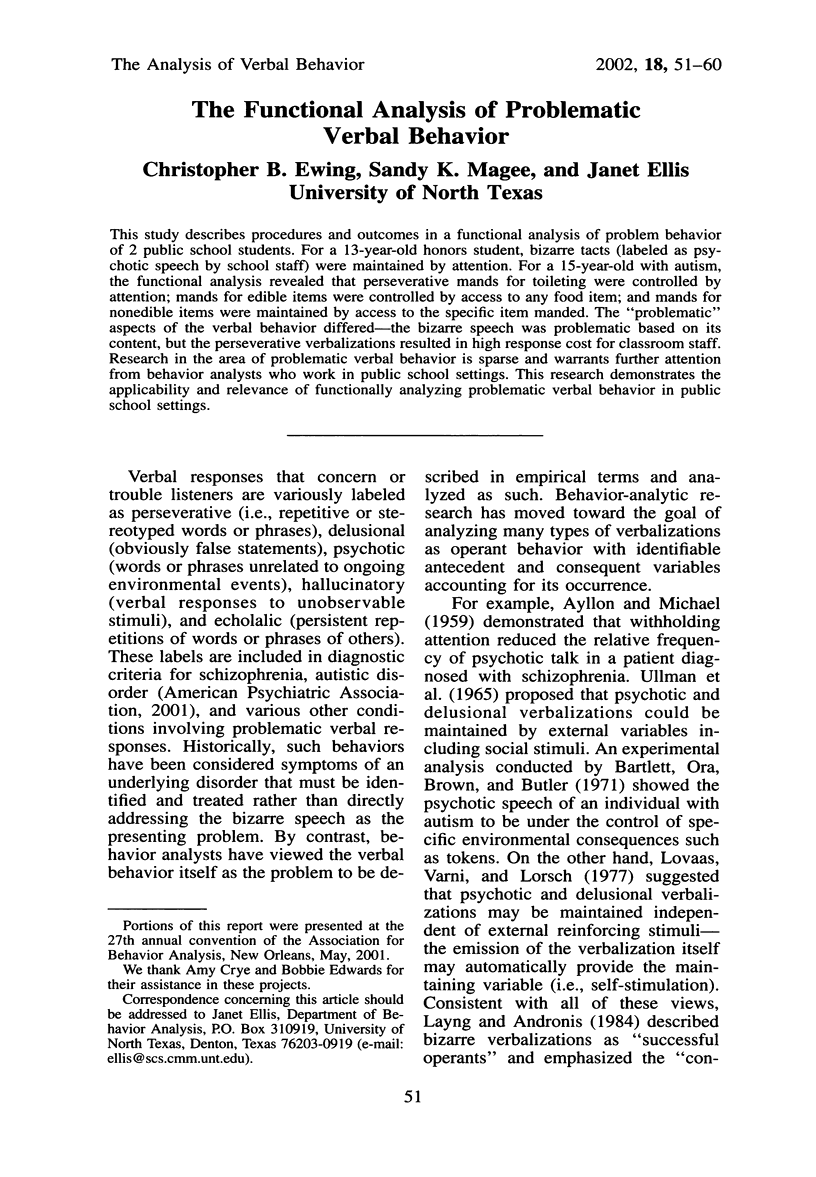
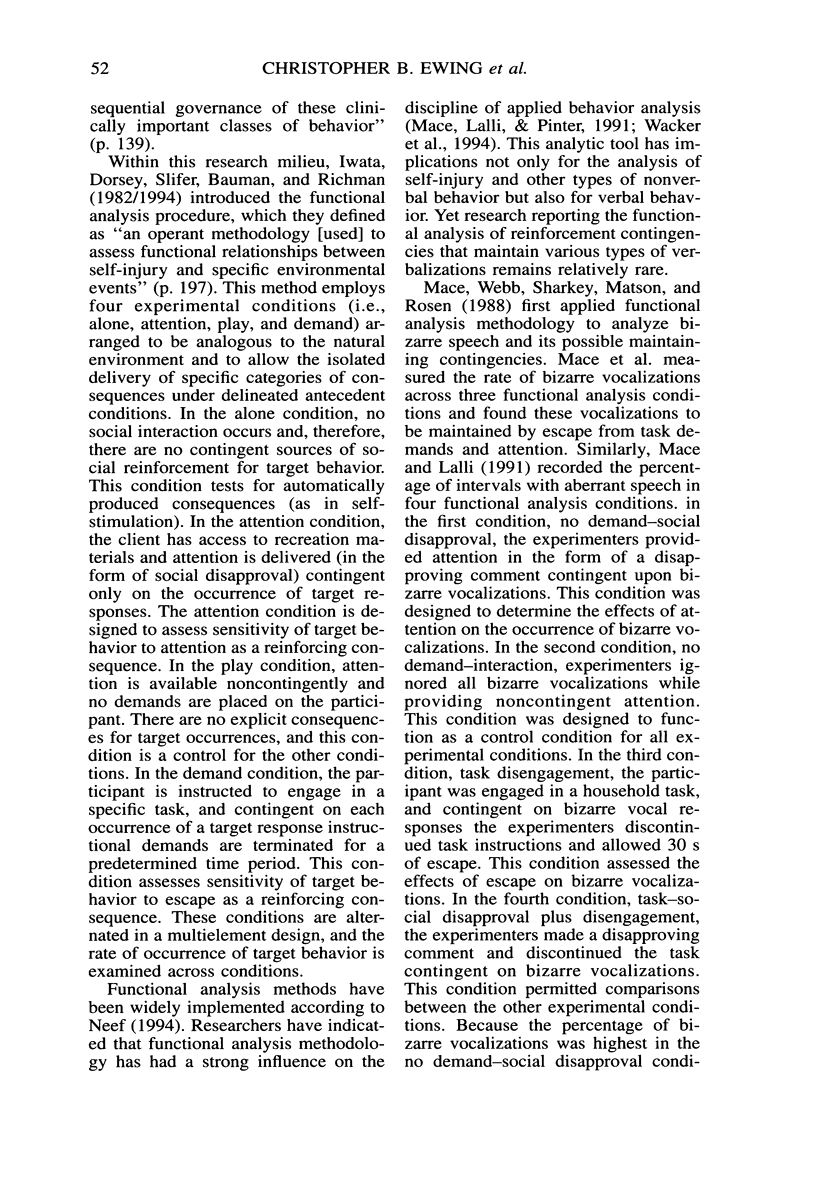
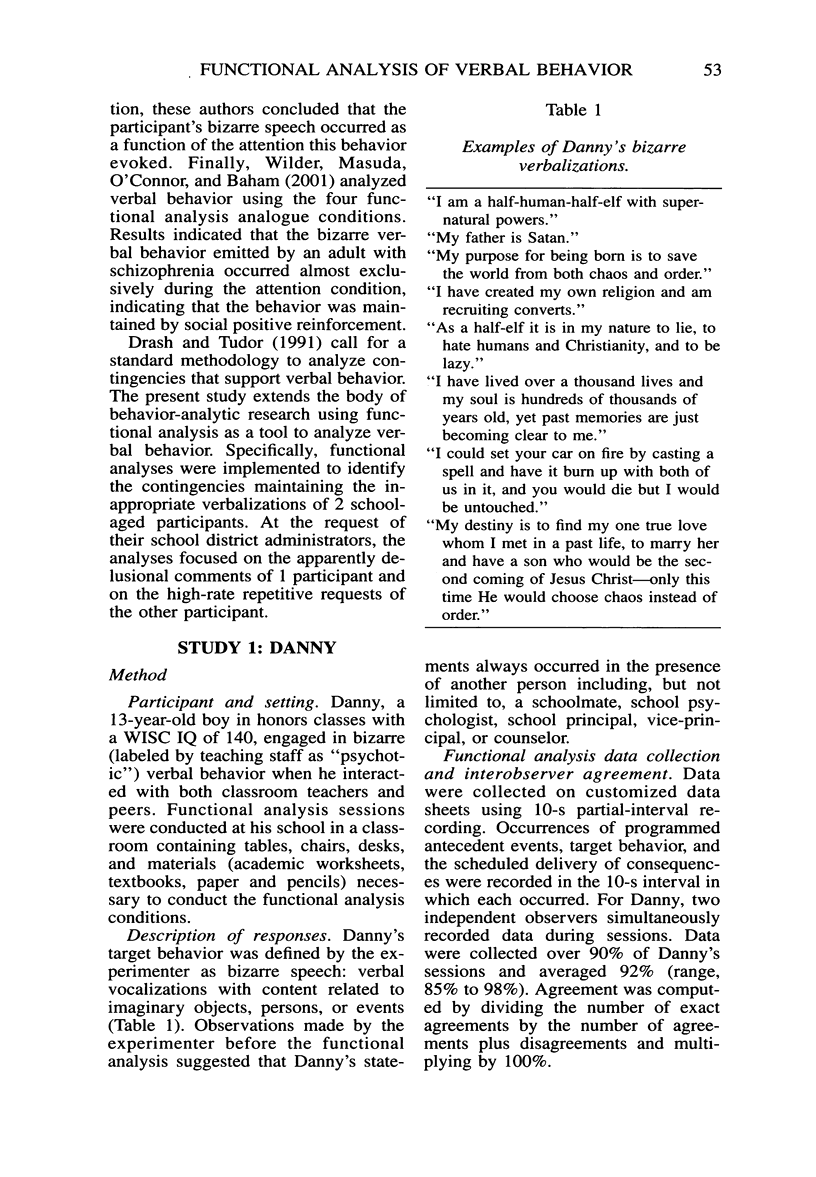
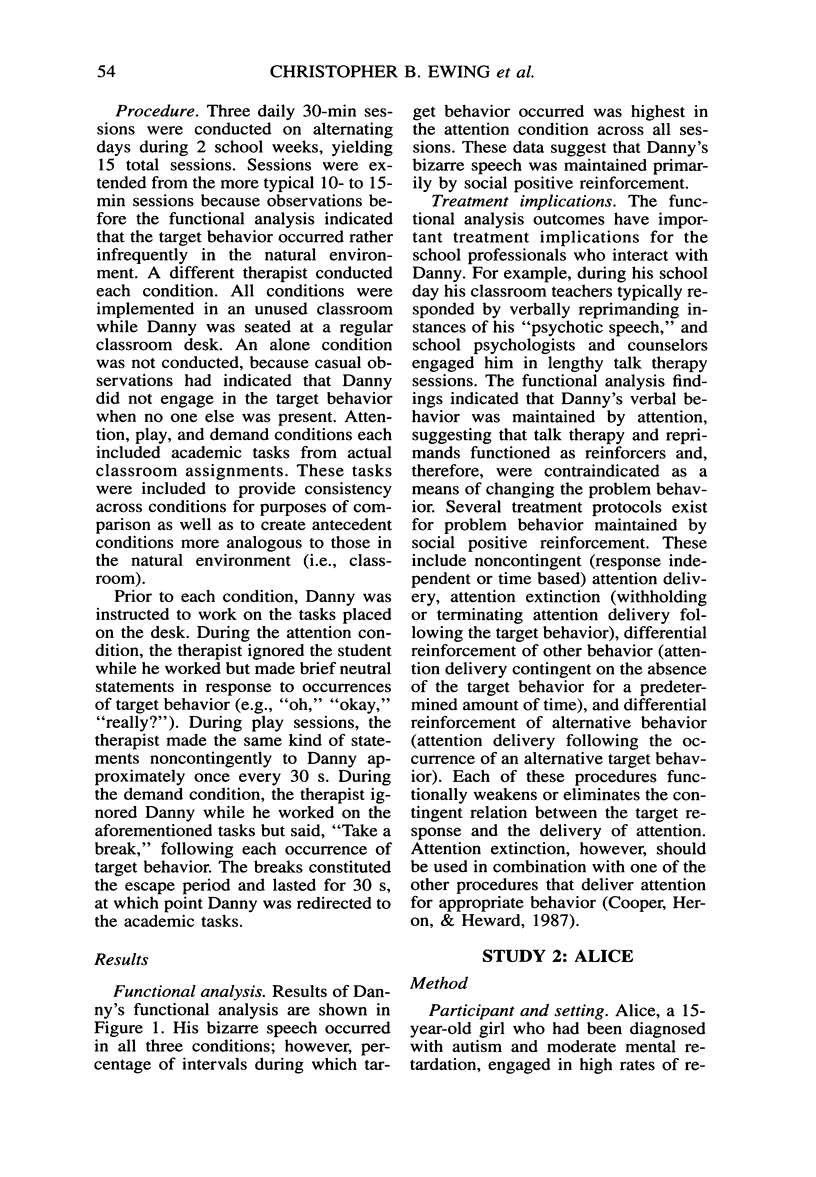
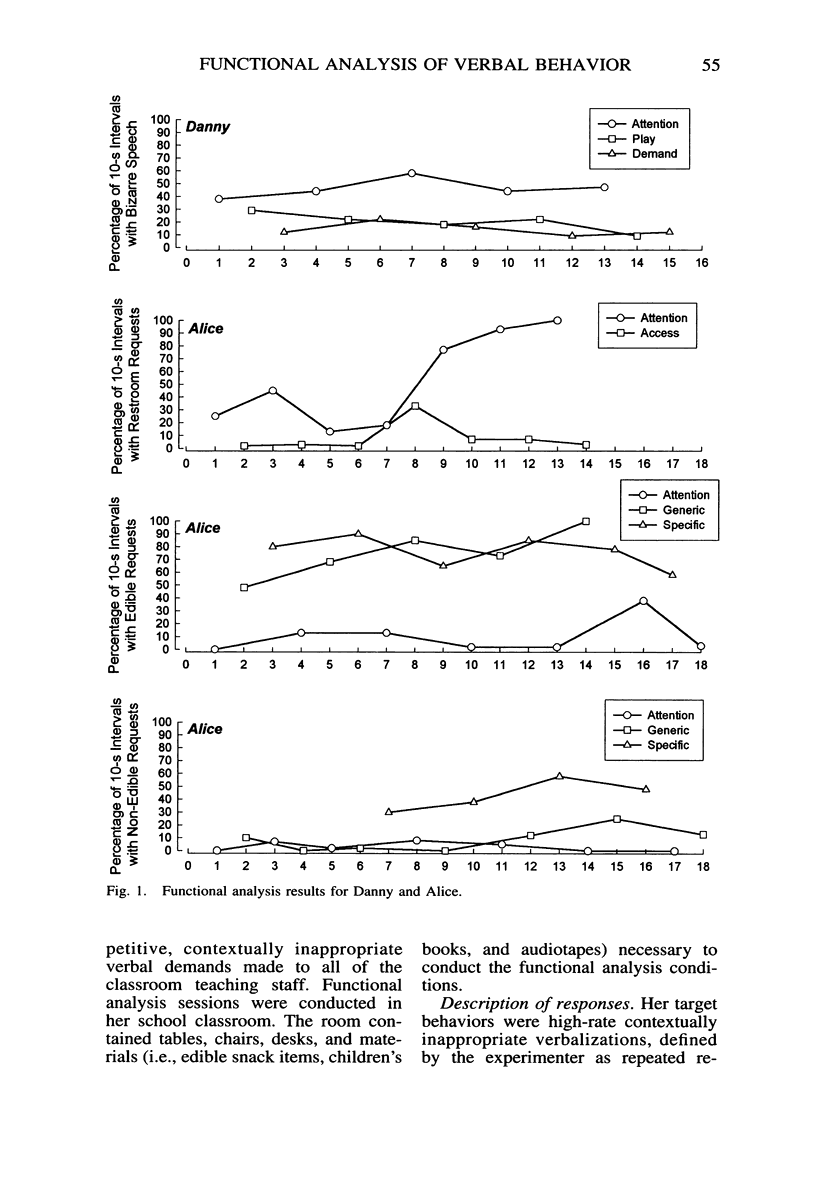
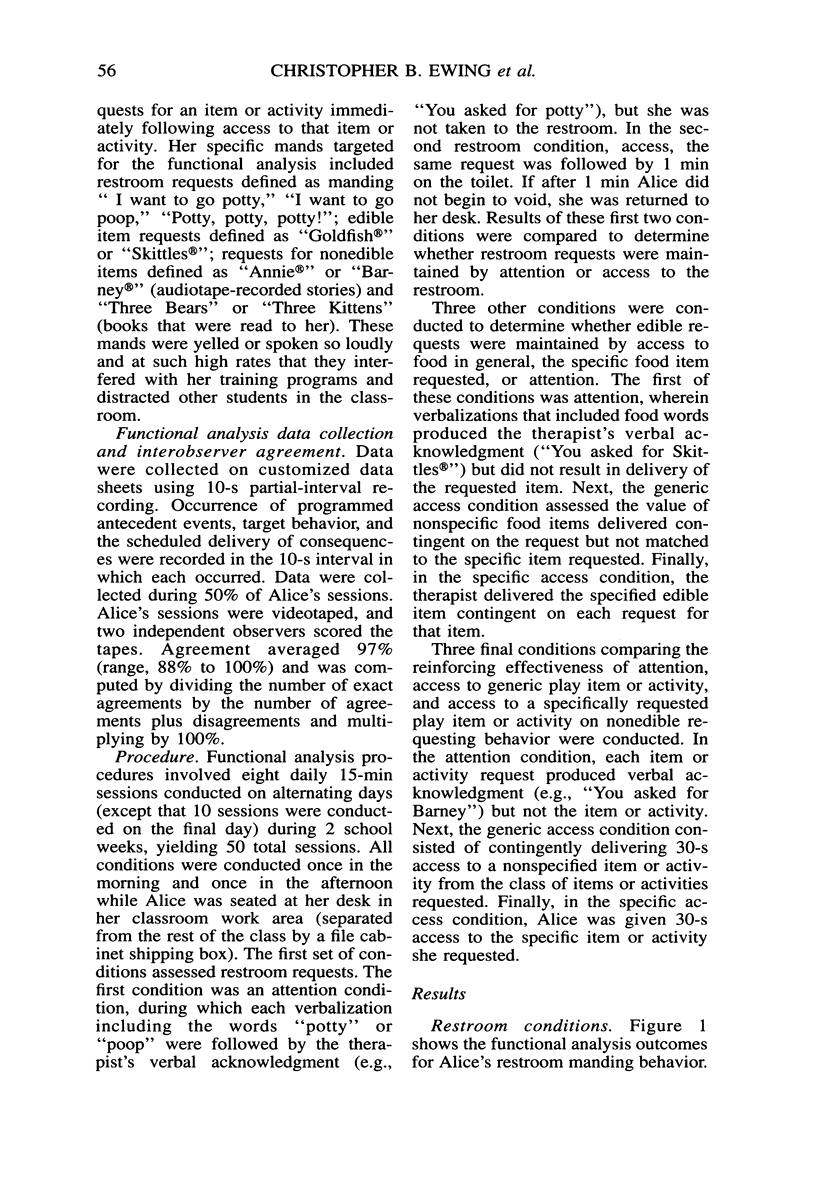
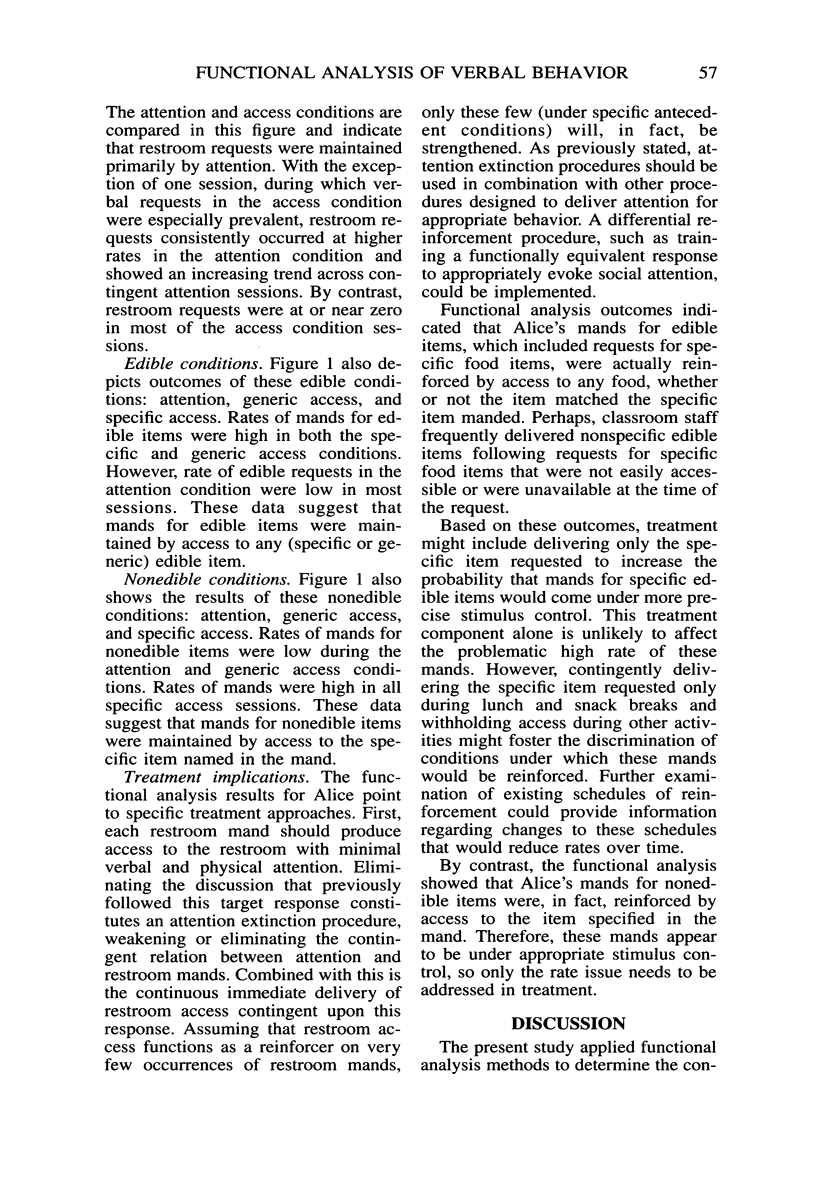
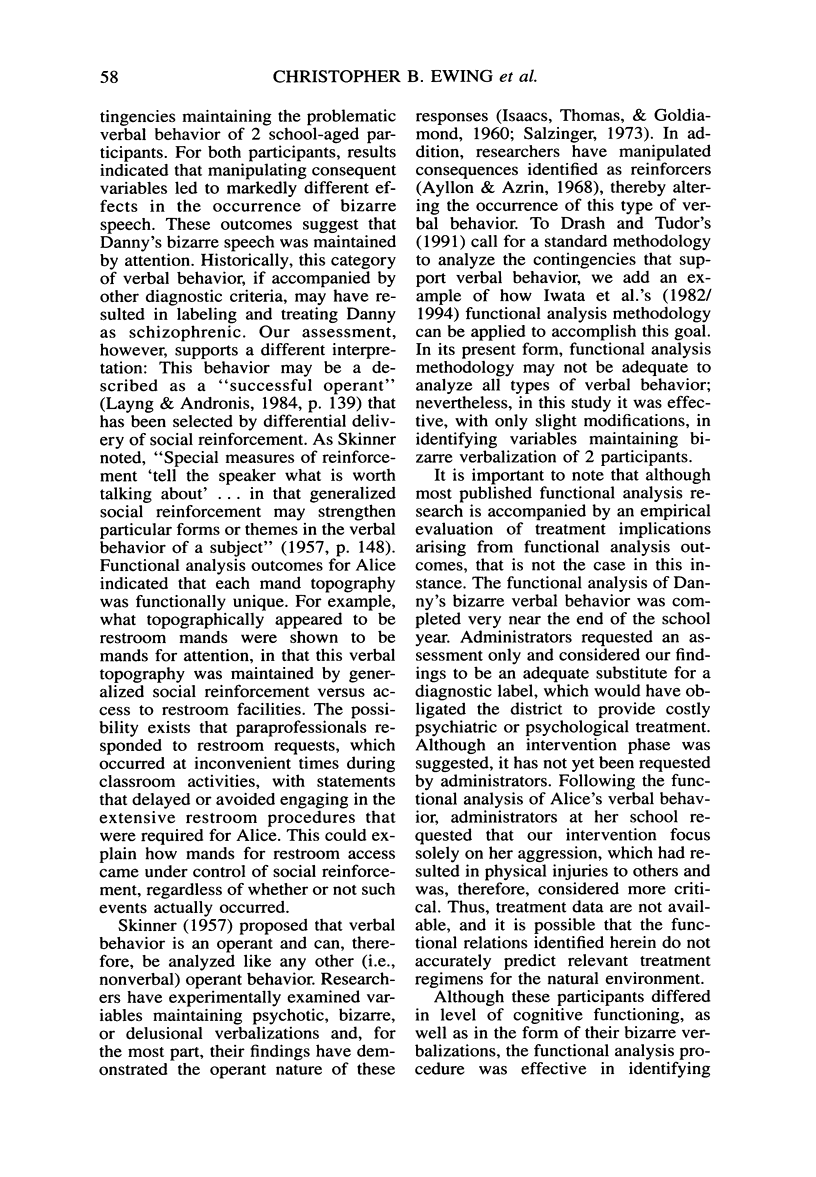
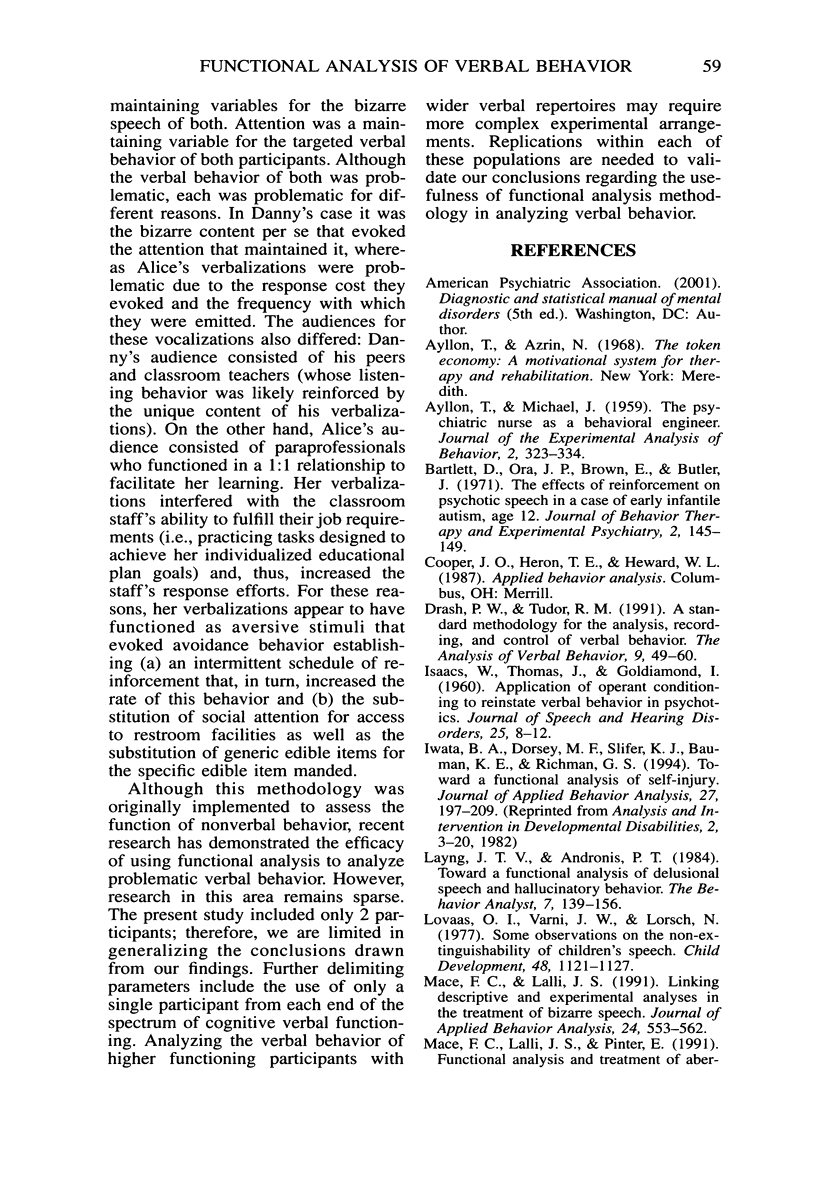
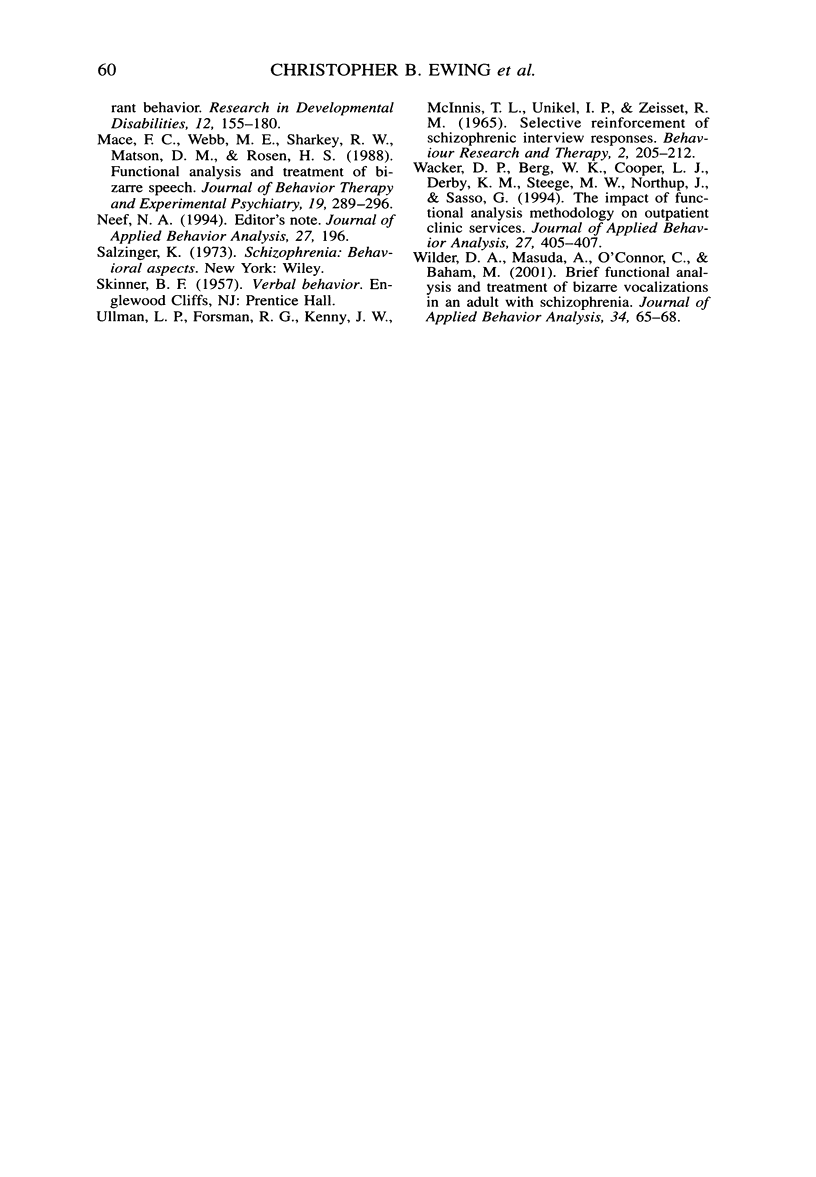
Selected References
These references are in PubMed. This may not be the complete list of references from this article.
- AYLLON T., MICHAEL J. The psychiatric nurse as a behavioral engineer. J Exp Anal Behav. 1959 Oct;2:323–334. doi: 10.1901/jeab.1959.2-323. [DOI] [PMC free article] [PubMed] [Google Scholar]
- ISAACS W., THOMAS J., GOLDIAMOND I. Application of operant conditioning to reinstate verbal behavior in psychotics. J Speech Hear Disord. 1960 Feb;25:8–12. doi: 10.1044/jshd.2501.08. [DOI] [PubMed] [Google Scholar]
- Iwata B. A., Dorsey M. F., Slifer K. J., Bauman K. E., Richman G. S. Toward a functional analysis of self-injury. J Appl Behav Anal. 1994 Summer;27(2):197–209. doi: 10.1901/jaba.1994.27-197. [DOI] [PMC free article] [PubMed] [Google Scholar]
- Layng T. V., Andronis P. T. Toward a functional analysis of delusional speech and hallucinatory behavior. Behav Anal. 1984 Fall;7(2):139–156. doi: 10.1007/BF03391897. [DOI] [PMC free article] [PubMed] [Google Scholar]
- Mace F. C., Lalli J. S., Lalli E. P. Functional analysis and treatment of aberrant behavior. Res Dev Disabil. 1991;12(2):155–180. doi: 10.1016/0891-4222(91)90004-c. [DOI] [PubMed] [Google Scholar]
- Mace F. C., Lalli J. S. Linking descriptive and experimental analyses in the treatment of bizarre speech. J Appl Behav Anal. 1991 Fall;24(3):553–562. doi: 10.1901/jaba.1991.24-553. [DOI] [PMC free article] [PubMed] [Google Scholar]
- Mace F. C., Webb M. E., Sharkey R. W., Mattson D. M., Rosen H. S. Functional analysis and treatment of bizarre speech. J Behav Ther Exp Psychiatry. 1988 Dec;19(4):289–296. doi: 10.1016/0005-7916(88)90060-2. [DOI] [PubMed] [Google Scholar]
- Neef N. A. Editor's note. J Appl Behav Anal. 1994 Summer;27(2):196–196. doi: 10.1901/jaba.1994.27-196. [DOI] [PMC free article] [PubMed] [Google Scholar]
- ULLMANN L. P., FORSMAN R. G., KENNY J. W., MCINNIS T. L., Jr, UNIKEL I. P., ZEISSET R. M. SELECTIVE REINFORCEMENT OF SCHIZOPHRENICS' INTERVIEW RESPONSES. Behav Res Ther. 1964;2(2-4):205–212. doi: 10.1016/0005-7967(64)90017-8. [DOI] [PubMed] [Google Scholar]
- Wacker D. P., Berg W. K., Cooper L. J., Derby K. M., Steege M. W., Northup J., Sasso G. The impact of functional analysis methodology on outpatient clinic services. J Appl Behav Anal. 1994 Summer;27(2):405–407. doi: 10.1901/jaba.1994.27-405. [DOI] [PMC free article] [PubMed] [Google Scholar]
- Wilder D. A., Masuda A., O'Connor C., Baham M. Brief functional analysis and treatment of bizarre vocalizations in an adult with schizophrenia. J Appl Behav Anal. 2001 Spring;34(1):65–68. doi: 10.1901/jaba.2001.34-65. [DOI] [PMC free article] [PubMed] [Google Scholar]


